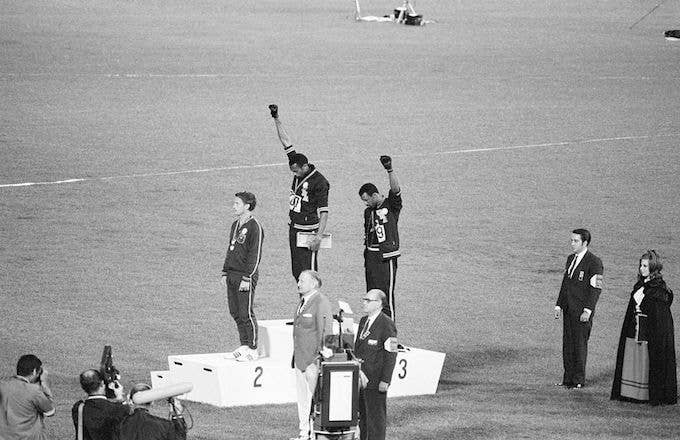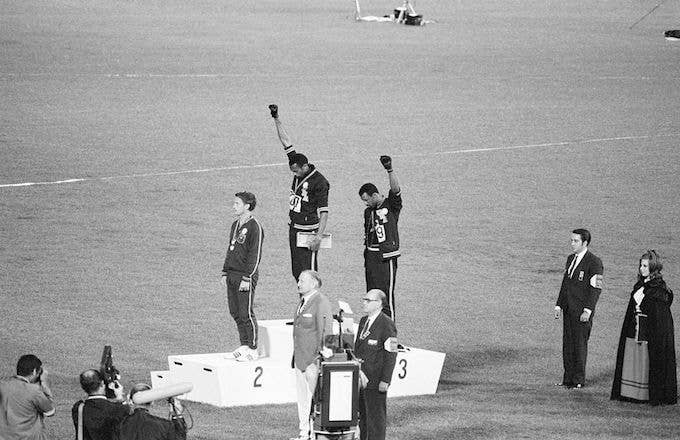
There was a moment during last weekend's widespread NFL national anthem protests where it felt like a time warp had been opened. New York Giants star Odell Beckham Jr. celebrated a touchdown by raising his fist in the air.
At that exact moment, with the president saying that African Americans' response to racist police violence has "nothing to do with race," it was as if no time at all had passed since a similar fist-raising—this one at the Olympics in Mexico City on October 16, 1968.
To say that those Olympics occurred in a politically charged environment would be perhaps the understatement of the century. The Black Power movement was in full swing, Martin Luther King Jr. and Robert F. Kennedy had been assassinated mere months prior, and that summer had seen days of massive protests and police violence outside the Democratic National Convention in Chicago. The movement against the Vietnam War was growing massively and, not unrelatedly, colonial states across the world were fighting for and gaining their independence.
It was against this backdrop that runners Tommie Smith and John Carlos formulated a plan about what they would do once they took the Olympic podium after winning medals in the 200-meter sprint. Pretty much everything the two did in their time on the world stage was carefully weighted and bore deep significance.
They took off their shoes, to demonstrate against poverty. To protest lynchings, they wore a scarf and beads. In defiance of Olympic norms, Carlos wore his jacket unzipped—to represent, he later wrote, "all the working-class people—black and white—in Harlem who had to struggle and work with their hands all day." And he wore a black t-shirt to cover up the letters "USA" on his uniform to "reflect the shame I felt that my country was traveling at a snail’s pace toward something that should be obvious to all people of good will."
And then, once the national anthem started, all hell broke loose.
Smith and Carlos raised their fists in the air. Since they only had one pair of gloves between them, Smith raised his right, black-gloved hand, and Carlos his left. The gesture, the Black Power salute (though Smith, for his part, always referred to it as a "human rights salute"), was met with instant boos in the stadium.
Smith and Carlos were kicked out of the Olympic Stadium and vilified in the press. They received death threats. Even the white man on the podium that day, Australian silver medalist Peter Norman, was kept out of future Olympics in punishment.
But the stand Smith and Carlos (and Norman) took went down in history. Photos of the moment became iconic, and it is no accident that, nearly half a century later, one of today's biggest NFL stars looked back to Mexico City for inspiration on how to protest racial injustice.
With right-wingers (and the Commander-in-Chief) working overtime to conflate protest at sporting events with contempt for the flag, it's well worth remembering what Carlos said about his Mexico City moment when interviewed about it for an HBO documentary.
"We were just human beings who saw a need to bring attention to the inequality in our country," he said. "There was nothing but a raised fist in the air and a bowed head, acknowledging the American flag—not symbolizing a hatred for it."

